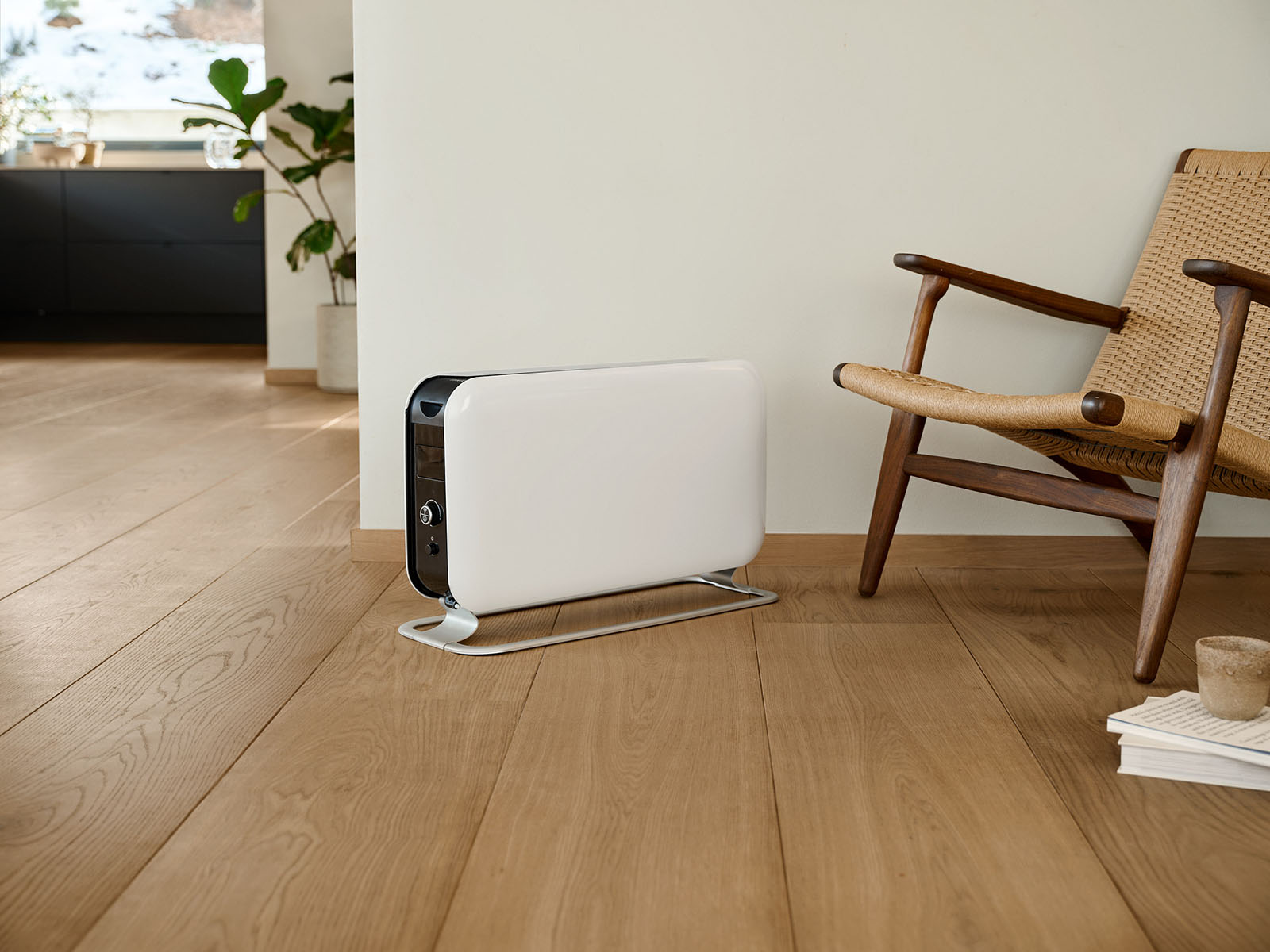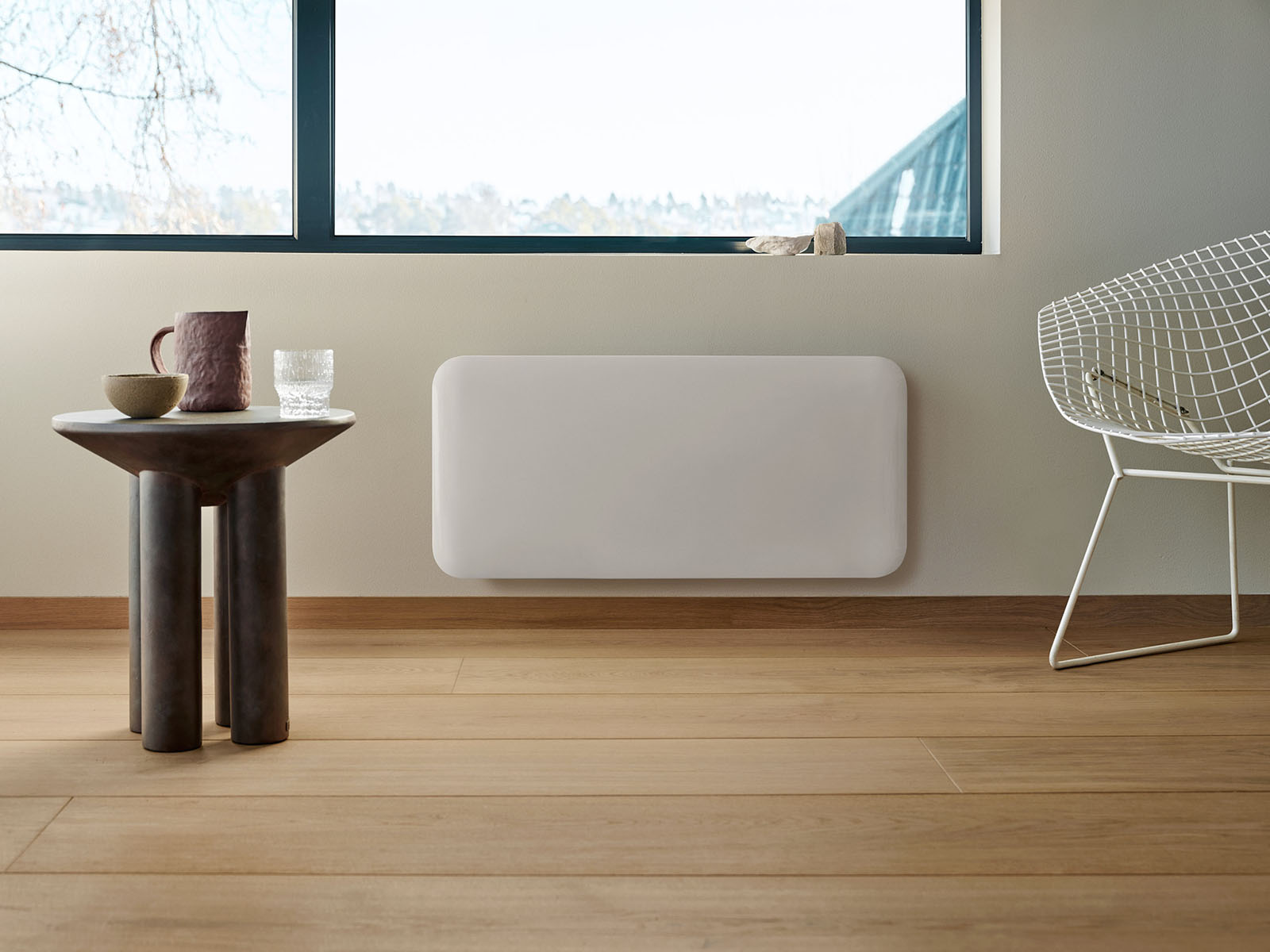For many, a home heater is a purely functional appliance — a metal box on the wall that you only think about when you’re cold. But what if it could be more? What if it could be a beautiful design object, an intelligent part of your smart home, and an efficient tool for saving energy? That was the question that led Philip and his father to found Mill Norway in 2012.
Today, Mill has grown from a design-focused startup into a global smart home brand, offering a complete ecosystem of heating and air quality products that integrate with Homey. We spoke with co-founder and co-owner Philip Bryn-Haugland, sales director (Nordics) and co-owner Ane Bryn-Haugland, and CEO Andreas Krona about their journey from a simple design idea to a cutting-edge smart home platform.
Hello Philip, Andreas, and Ane! Thanks for joining me today. Every company has an origin story, so let’s start at the very beginning. What was the initial spark or the specific problem you saw in the world that made you decide to start a company focused on home heaters?
PHILIP: “It started with a very simple question: why does every heater look so unappealing? Why do you have to install a traditional heater in your new or remodeled home? In 2012, we started Mill as a design company first. The real leap into the smart home space came around 2016. We saw that to save serious money and energy, people needed better control over their heaters. With Wi-Fi in every home and everyone using apps, it was the perfect time to make our beautiful heaters smart.”

ANE: “Exactly. In Norway, up to 60% of a household’s energy consumption comes from electric heating. The industry was very mature, with minimal innovation in terms of design and tech. People spend so much money and effort making their homes beautiful, only to have to put these old-looking, traditional heaters on the wall. When we launched our first glass panel heater, it was like a breath of fresh air in the market. Consumers and retailers loved it from day one because you could finally buy a great-looking heater.”
Mill products don’t resemble traditional heaters and feature a distinct, Scandinavian aesthetic. Could you talk about what that means and why creating a beautiful heater was as crucial as building a functional one?
PHILIP: “For us, it’s what we see every day, but I understand it’s a specific style that has become a trend, especially in places like the UK, where it’s known as ‘Scandi’. To me, Scandinavian design simply means clean, unobtrusive, simple, and elegant. It just blends into the home. For our products, that means a minimal number of logos, marks, and intrusive elements. On our steel heaters, you only see the logo when you interact with the display; otherwise, it’s completely discreet. The goal is to create a product that enhances the room without drawing unnecessary attention to itself.”

Your roots are firmly in Scandinavia, but Mill is now a global brand. Could you tell us about your international expansion and where customers can currently find your products?
ANE: “Yes, while we come from the Nordics, we’ve grown into a truly global brand. We’re now sold in more than 30 countries. The Nordics are our home base, of course, and we’re the market leader for smart heaters here in Norway. But we’ve also expanded significantly across Europe, with strong distribution through leading retailers in places like the Netherlands, France, and the UK.”
“Our reach goes even further, and for many years we’ve also sold Mill products in Korea, Japan, Australia, and even South Africa. This expansion has been fascinating to see, and it shows that the need for well-designed, smart climate control is a universal one.“
ANDREAS: “That global presence means we now have more than 500,000 connected devices online. It’s a number we’re very proud of. It quantifies the trust customers have placed in our brand worldwide and highlights the positive impact we’re having.”
Developing both innovative hardware and the software that accompanies it is a huge undertaking. Could you share some of the biggest challenges you faced when you first started building your brand, and how you overcame them?
PHILIP: “The first generation of our smart products, introduced in 2016, actually came together very quickly. I recall sitting at home, creating wireframes for the app on a mockup website. We got someone to code it as the hardware was coming together. It all clicked, and we launched the first series within about half a year. But that was Gen 1, and we soon realized our initial platform wasn’t our own and couldn’t scale.”
ANE: “Mill heaters quickly scaled to hundreds of thousands of connected units. During this rapid growth, we encountered challenges in managing server capacity, which occasionally resulted in temporary platform outages during periods of high usage.”
ANDREAS: “We knew that to be future-proof and provide the stability our customers deserved, we had to build our own platform from the ground up. That transition, which took place between 2021 and 2023, was both challenging and complex. Migrating an entire platform isn’t for the faint of heart.”
PHILIP: “But the result’s been incredible. The new platform is built on Amazon Web Services and is serverless, allowing it to scale automatically. This year, we’ve achieved 100% uptime, and it’s been 99.9% since the migration. It was painful, but building our own platform was the best decision we could’ve made for the long-term reliability of our products.”
Your latest heaters use PID technology. For a user, what’s the most noticeable difference in comfort and energy usage when using a PID heater versus a simple on/off thermostat?
PHILIP: “The difference is huge in both comfort and efficiency. The most inaccurate heaters use a mechanical knob thermostat that can vary by up to 3 or 4 degrees. Our older generations were better, at about plus or minus one degree, but that’s still a two-degree swing. Most heaters are binary — they’re either 100% on or 100% off. This creates a temperature wave, where the room gets too warm, then too cold.”
“With PID, instead of that harsh on/off cycle, the heater ‘dims’ the power it uses. As it approaches your target temperature, it gradually reduces the wattage. A 1000-watt heater might end up using an average of just 100 watts simply to maintain the temperature perfectly. You don’t get that overshooting and undershooting in energy usage and comfort.”
ANE: “This provides a much more stable, comfortable heat that’s also more energy-efficient. A study by Norway’s leading technology university found that with our PID technology, predictive heating, and weekly programs, a user in an older home can reduce energy use by up to 29% when it’s -7°C outside.”
You’ve expanded beyond heating into indoor air quality products, thermostats, and smart plugs. What’s the connection there? How do these various products work together to create a better home environment for your users?
ANE: “Heating is our core, but our vision is to offer a complete solution for a healthy and comfortable indoor environment. We recently launched smart heat pumps and smart floor thermostats, making us the only brand in the Nordics to provide both smart hardware and control for all major home heating technologies, all within one ecosystem.”
“The Mill Smart Plug is also a key part of our lineup. There are still so many ‘dumb’ heaters out there, and our plug — which has an integrated temperature sensor — can make any of them smart through the Mill app. It’s a great way to extend the life of an older appliance.”

“From there, expanding into other air treatment products like our super-quiet air purifiers — which go down to 18.5 decibels — and our indoor air quality sensors was a natural next step. Users don’t want a dozen different apps. They want one seamless experience, and we’re seeing strong adoption of new products from our existing user base.”
Your products now work with Homey via the official Mill app and also support Matter. How do you decide which smart home platforms and standards to prioritize?
PHILIP: “Our philosophy is simple: whatever floats your boat. We let people control our products however they like. While we strive to build the best app possible, we know many users already have a preferred platform.”
“Homey is very important to us because it serves a savvy user base that loves IoT. For broader compatibility, Matter is a one-stop shop. Instead of building separate integrations for Apple, Google, and others, we can be Matter-compliant and have it work for everyone.”
”We also design our hardware to be future-proof. Our latest chipsets include Wi-Fi, Bluetooth for easy setup, and Zigbee 3.0. We even offer local APIs for technical users who want to integrate with Home Assistant. The most important thing is that customers love our products, no matter how they choose to control them.”
What is the next major technological innovation you are working to integrate into your product line? What should we expect from Mill in the near future?
ANDREAS: “We just had our biggest launch yet with our Generation 4 panel heaters and smart floor thermostats. One key innovation in the Gen 4 heaters that we’re really proud of is the focus on sustainability and repairability. The control panel is now detachable and modular.”
If there’s ever an issue with the connectivity module or if new technology comes along in the future, users can simply replace the top part instead of the entire heater. It’s better for customer service since we can send a small part instead of a complete unit, and it’s much better for the environment.”
”This new hardware also includes a powerful computer with massive integration potential, which lets us keep innovating on the software and firmware side to deliver new value to products our customers already own.”
Looking back at every product you’ve launched, which one would you consider your hero product?
PHILIP: “For me, it wasn’t a single model but a series: the Generation 3 heaters. That launch was a massive step for us. Gen 1 and Gen 2 had some connectivity challenges that were pretty common in the early days of smart home tech. Back then, Apple and Google throttled the ability for apps to scan for Wi-Fi networks, which made connecting devices much more difficult with the tech we had.”
ANDREAS: “Exactly. Early smart home systems were still a bit immature. With Gen 3, we introduced Bluetooth for authentication, making setup easier and more stable for customers. It solved a bunch of issues and really laid the foundation for the much more robust technology we’ve built since.”
Finally, what’s the most critical piece of advice you would give to entrepreneurs starting out in the smart home or HVAC space today?
PHILIP: “Just launch. When we released Gen 1, we did it in six months. We knew it wasn’t perfect, but it was good. You can sit and tweak an idea forever, but you won’t know what really matters to the end user until you get it out there and get feedback. You might spend time perfecting things that don’t matter and miss the opportunity entirely. That’s easier when you’re a startup. Now that we’re a bigger company, we can’t iterate in the market quite the same way. But for someone just starting out: go for it.”
ANE: “I’d add that you shouldn’t always rely on existing market data. Sometimes, that data doesn’t show the true potential of a completely new idea. You have to believe you can build the market to be bigger than it is today.”
Thanks for talking with me today!
ANE: “Thanks for having us, have a good day!”







